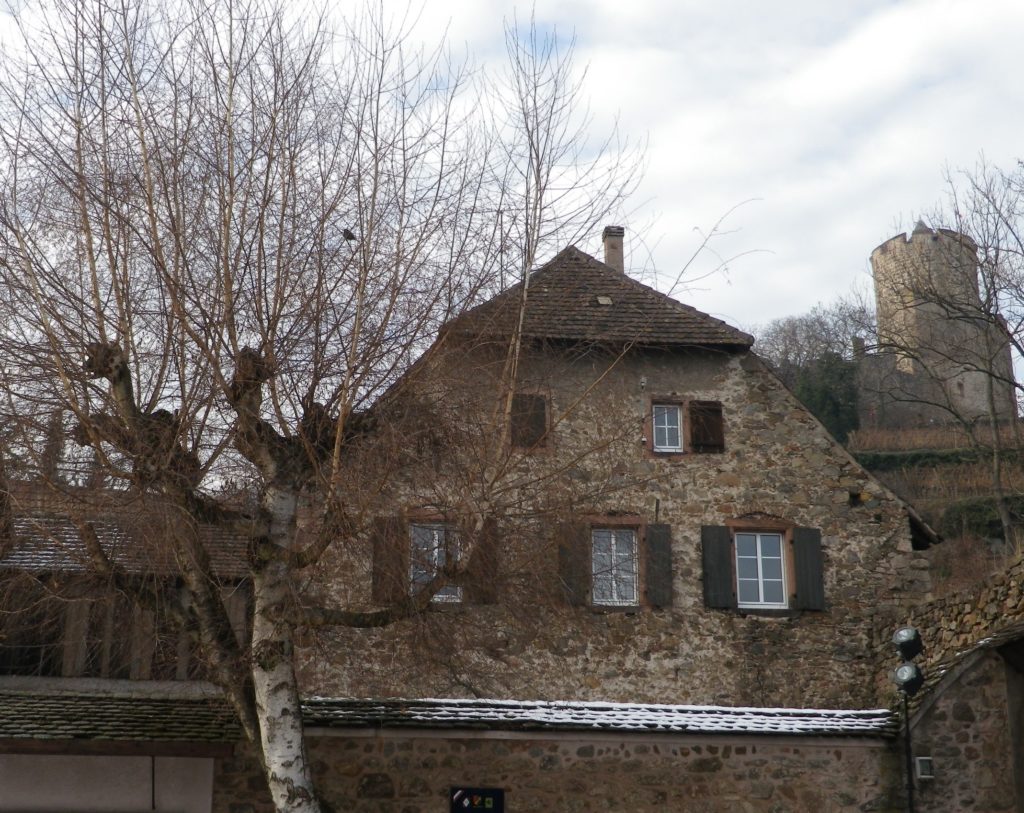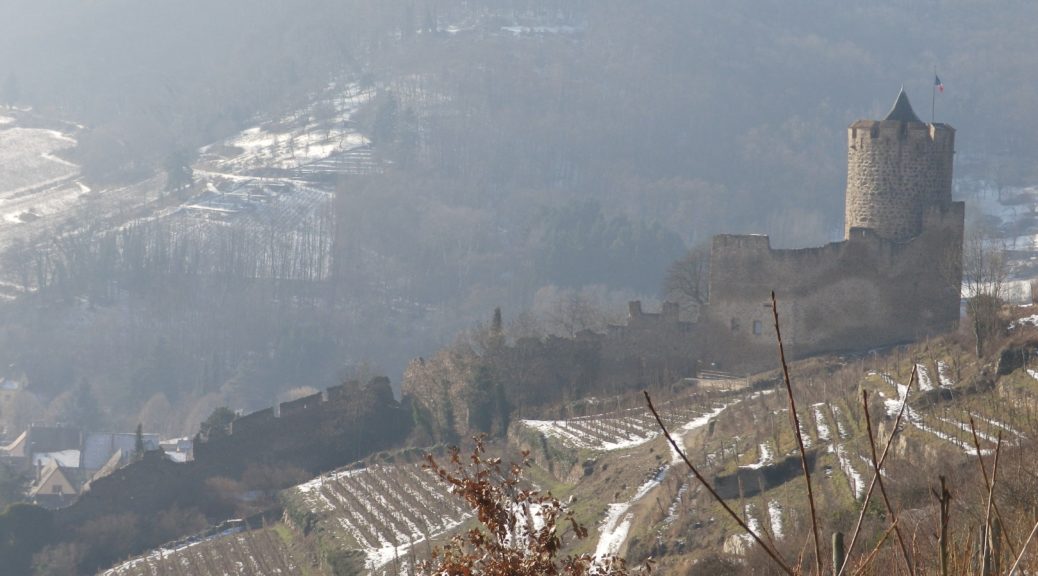Wine is a great European tradition. The Way of Saint James (“The Way”), a pilgrimage route to the far northwestern corner of Spain, is another. The two combine magnificently on this short hike.
Around the year 1000 A.D., people across northern Europe began to undertake pilgrimages to the shrine of Saint James (the Greater). The routes they took to northern Spain tended to converge in France, just in front of the Pyrenees, which they would cross in groups, before continuing the long trek across northern Spain. Of course, for northern Europeans, there was no one route, rather a series of waypoints (mostly small towns or large monasteries) that lead to the Pyrenees’ passes. Most of these waypoints were a day or so apart, where those who hiked The Way (and that was most of them), could find food, shelter and safety for the night. The routes today, if not strictly identical to the ones in medieval times, still follow that precept. Hiking in Germany, northern France, even Switzerland, The Way routes are seemingly ubiquitous. It is now popular to hike in stages over the years, culminating finally at Santiago de Compostela.
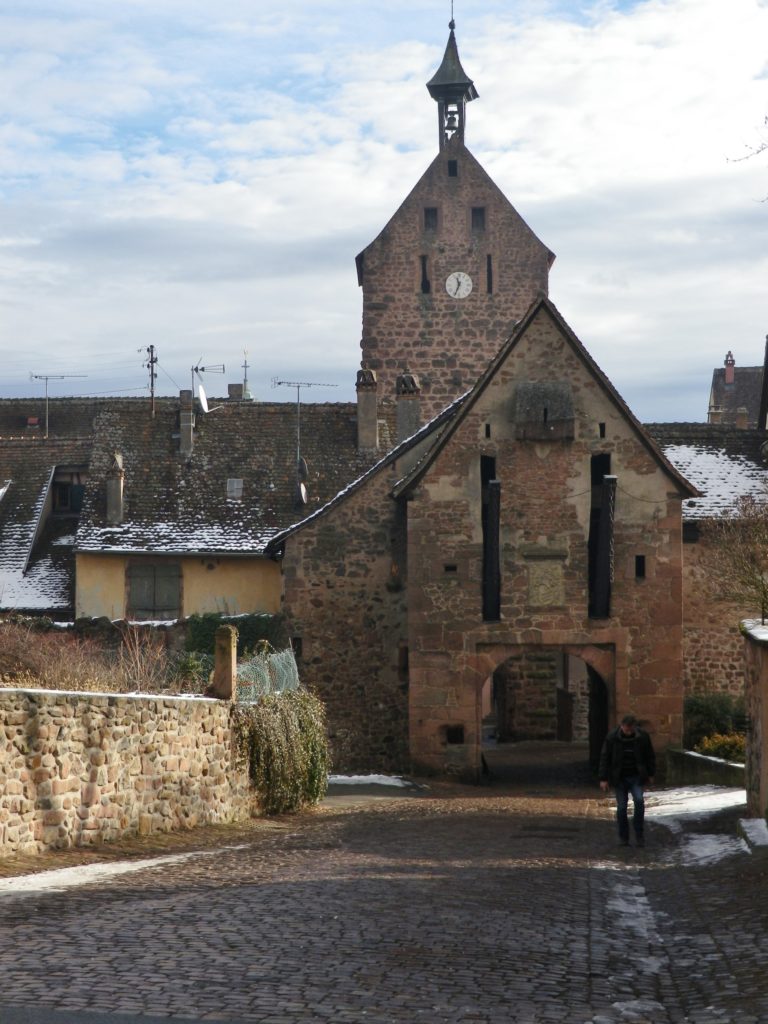
Fully intending to hike The Way across northern Spain someday, for now, I had to satisfy myself with completing a stage in the heart of Alsace’s wine country, through or near some of Alsace’s best vineyards. Starting within a few meters of Riquewihr’s Grand Cru Schoenenbourg, I followed the trail south, past the old ramparts of the appropriately medieval-looking town. Soon the route entered vineyards, the Schoenenbourg now behind me, and the Sporen off to the left. Civilization seemed far away, as vistas of forest, hills and vines opened up. The occasional person appeared along the route, but mostly, nature and your own thoughts are your companions along the way, even this close to one of the most popular towns on the Alsatian wine route.
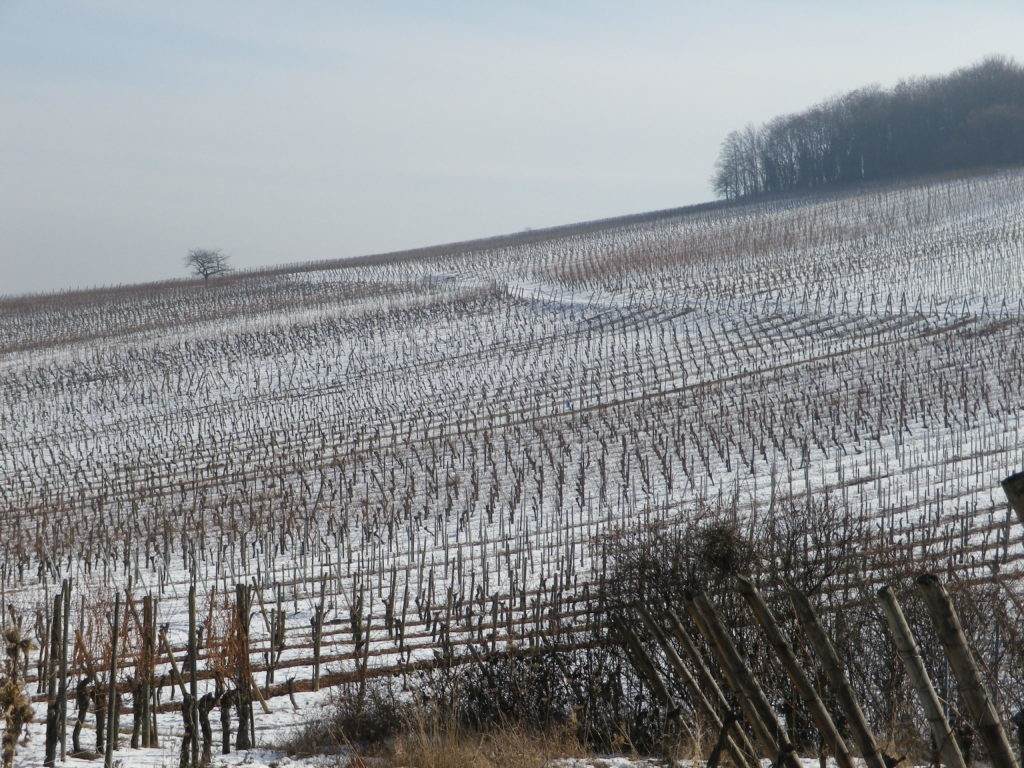
Approaching Kaysersberg, another popular town, the route passed through the Grand Cru Schlossberg. It enters a ravine and climbs to the tree line. It wasn’t until then that I noticed the granite cliff faces in this part of Alsace’s vineyards. Granitic soils are not terribly common in Alsace, but they are here and in the nearby Kaefferkopf Grand Cru, just visible beyond Kaysersberg. (In contrast, the Schoenenbourg Grand Cru, where I began just a few miles north, has very different soils.) Riesling is by far the predominant varietal planted in Grand Cru Schlossberg’s south-facing, small terraces.
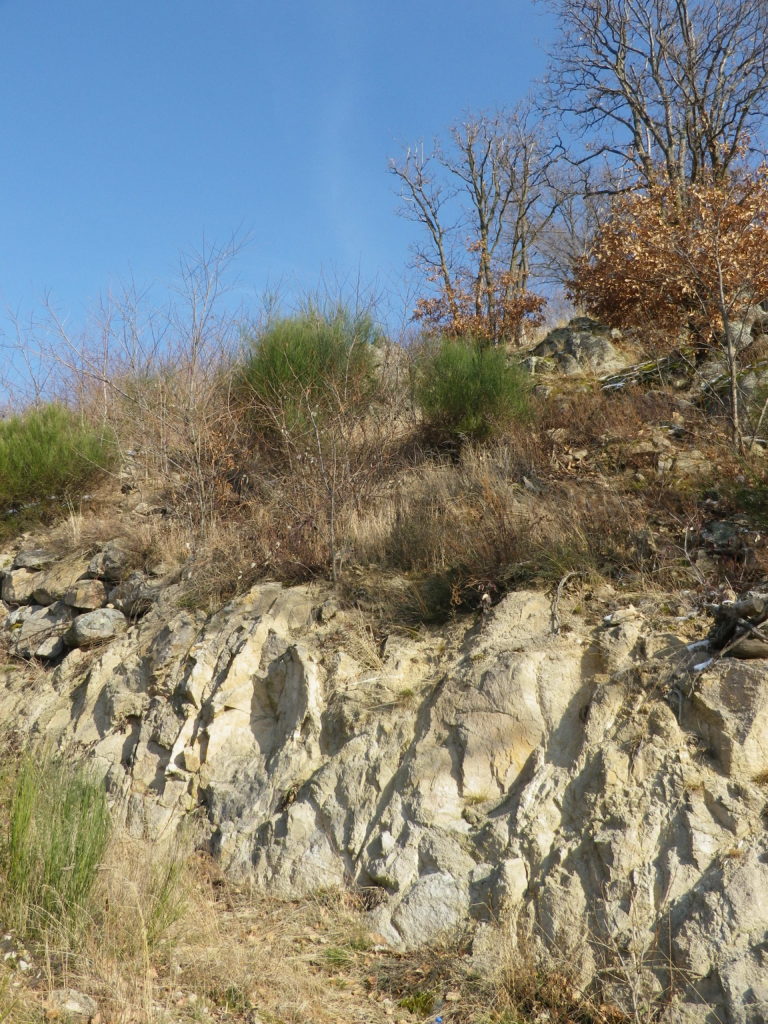
Soon, I was passing through the castle ruin of Kaysersberg with its impressive tower, and heading down stairs along the stone walls. Kaysersberg is famous not only for its wine, but also for its native son, the medical missionary and Nobel Peace Prize winner Albert Schweitzer. The old town doesn’t look that different from when he was here prior to World War I, judging from old photos. Nor would the town’s general outlines today look much different to a pilgrim of old, stopping here for the night, and enjoying some of the local wine. Like the general outlines of the old town, some time-honored traditions don’t change!
